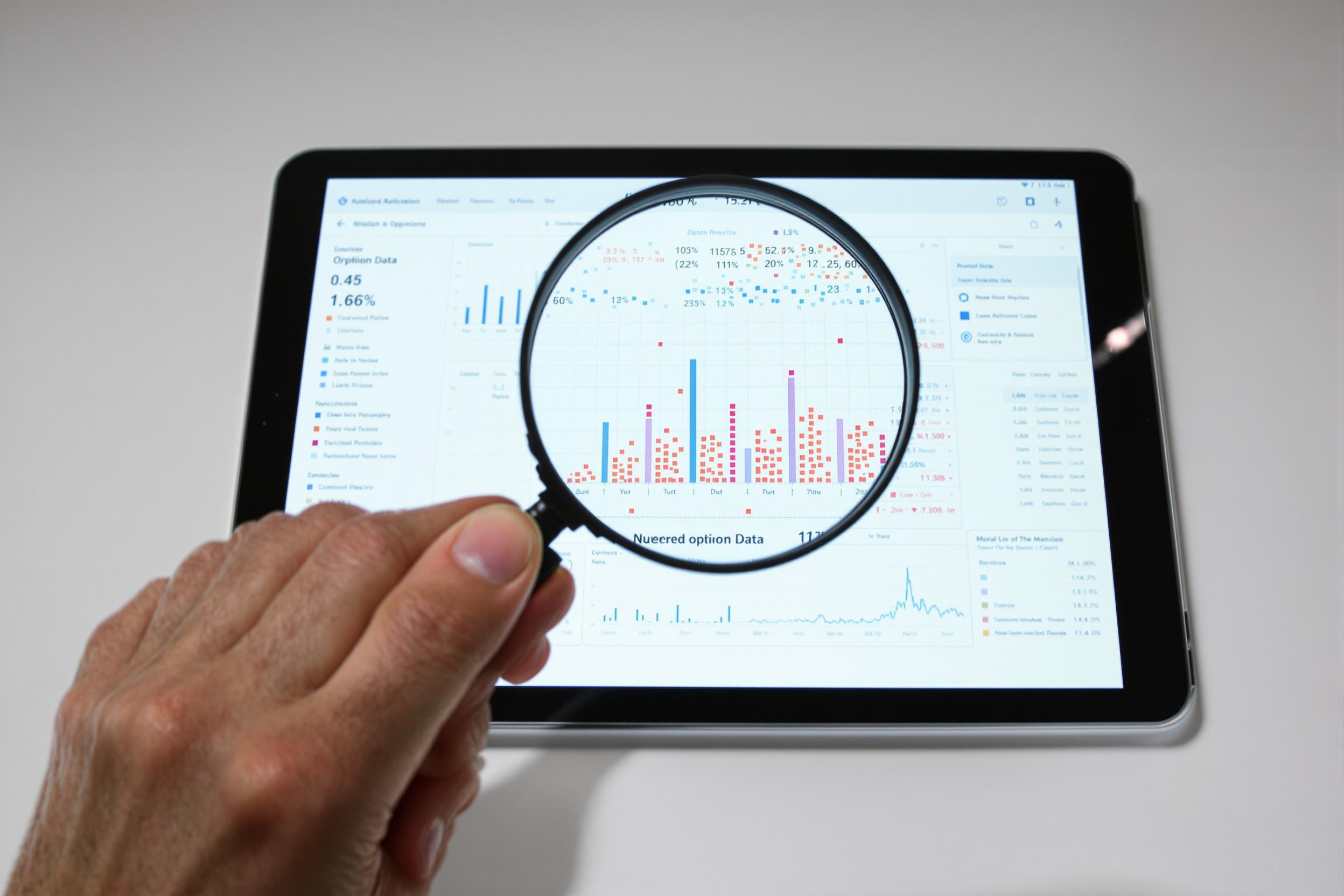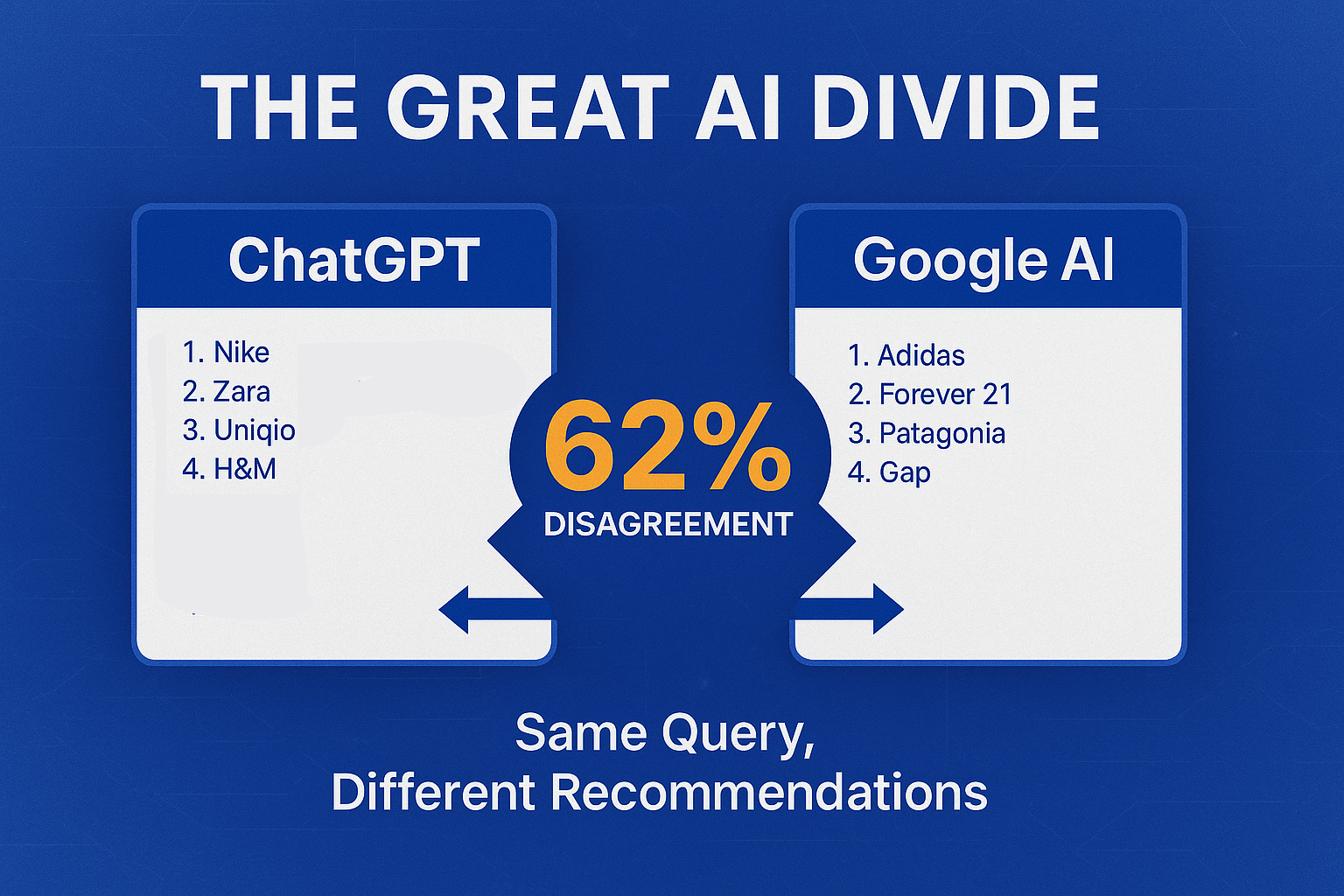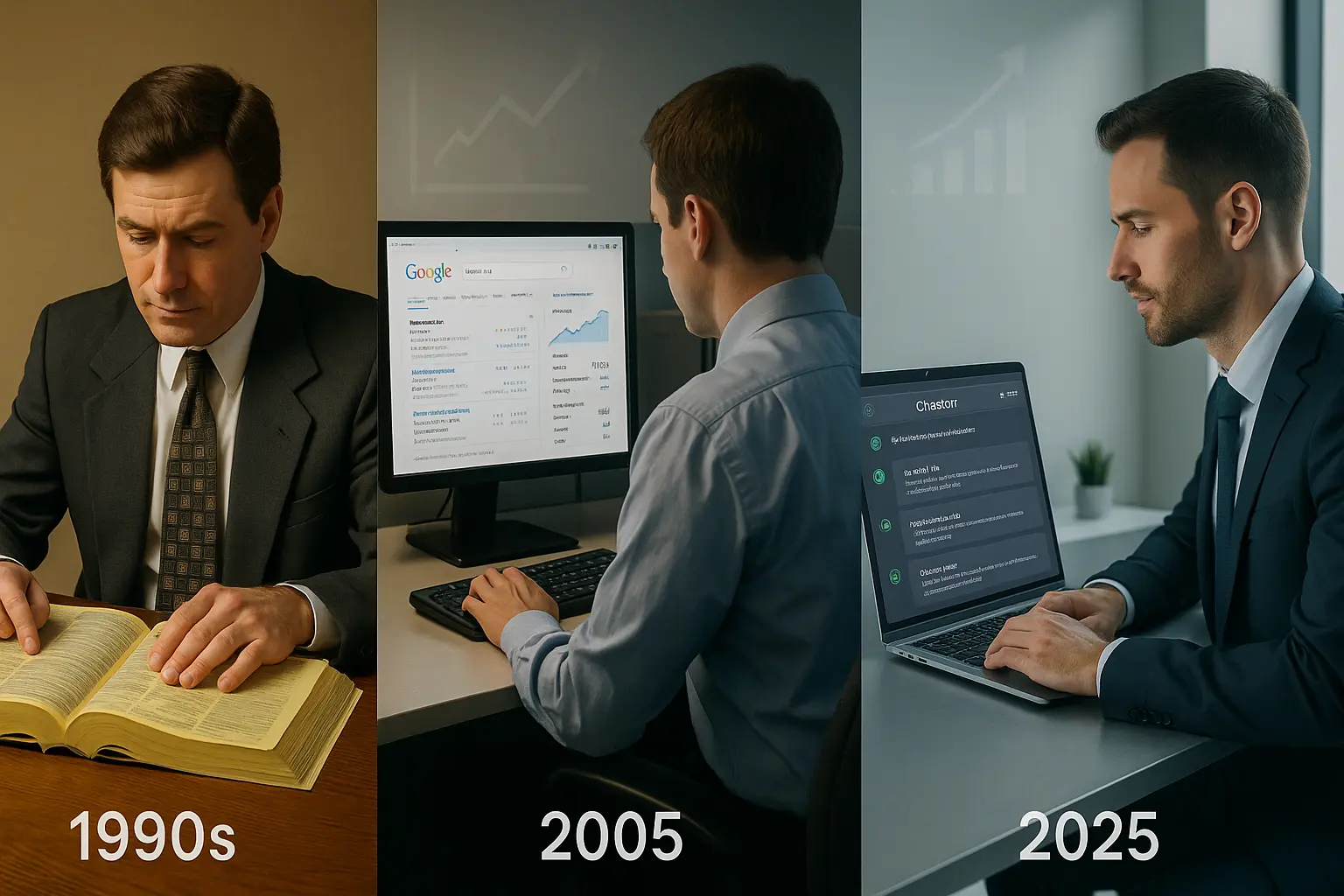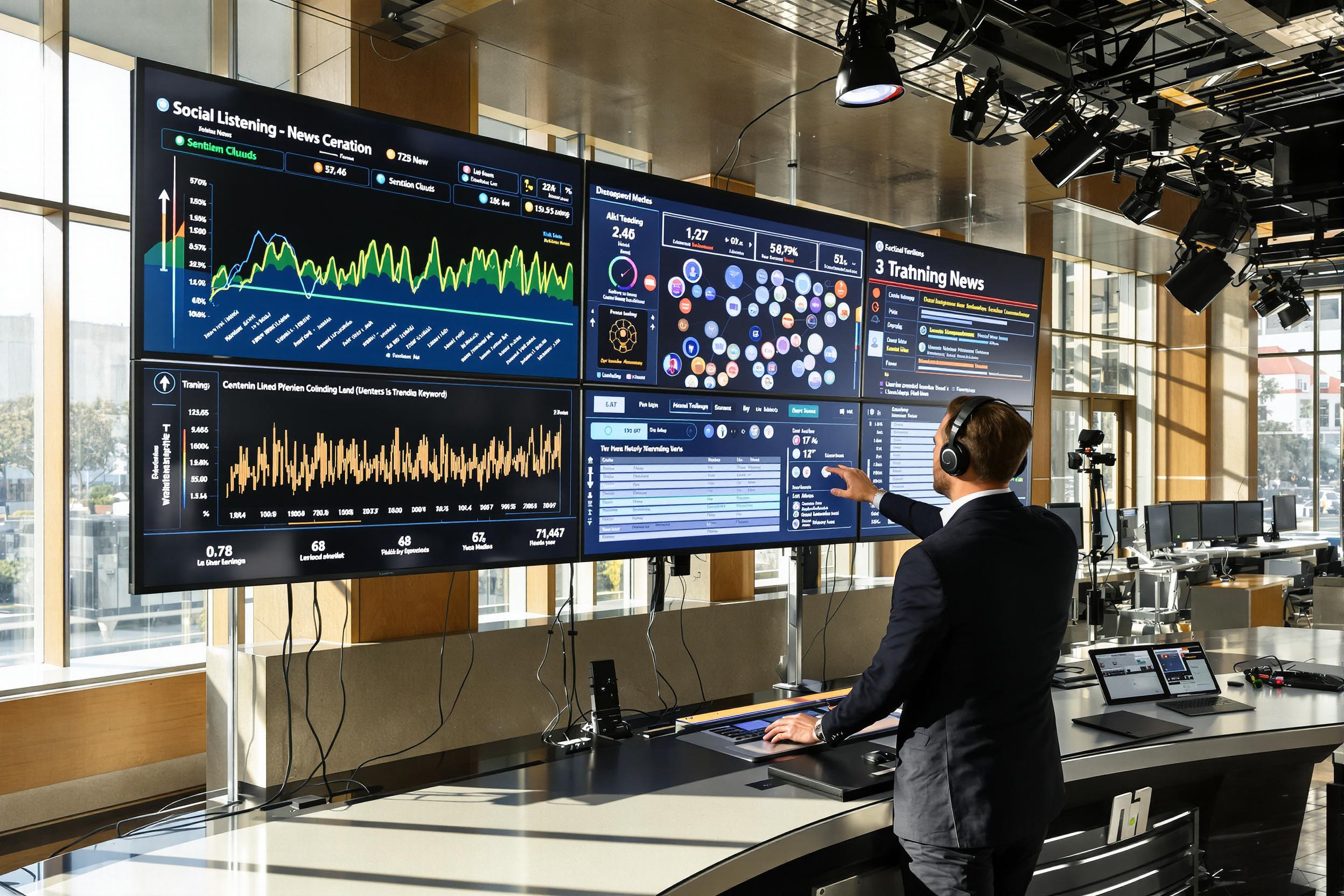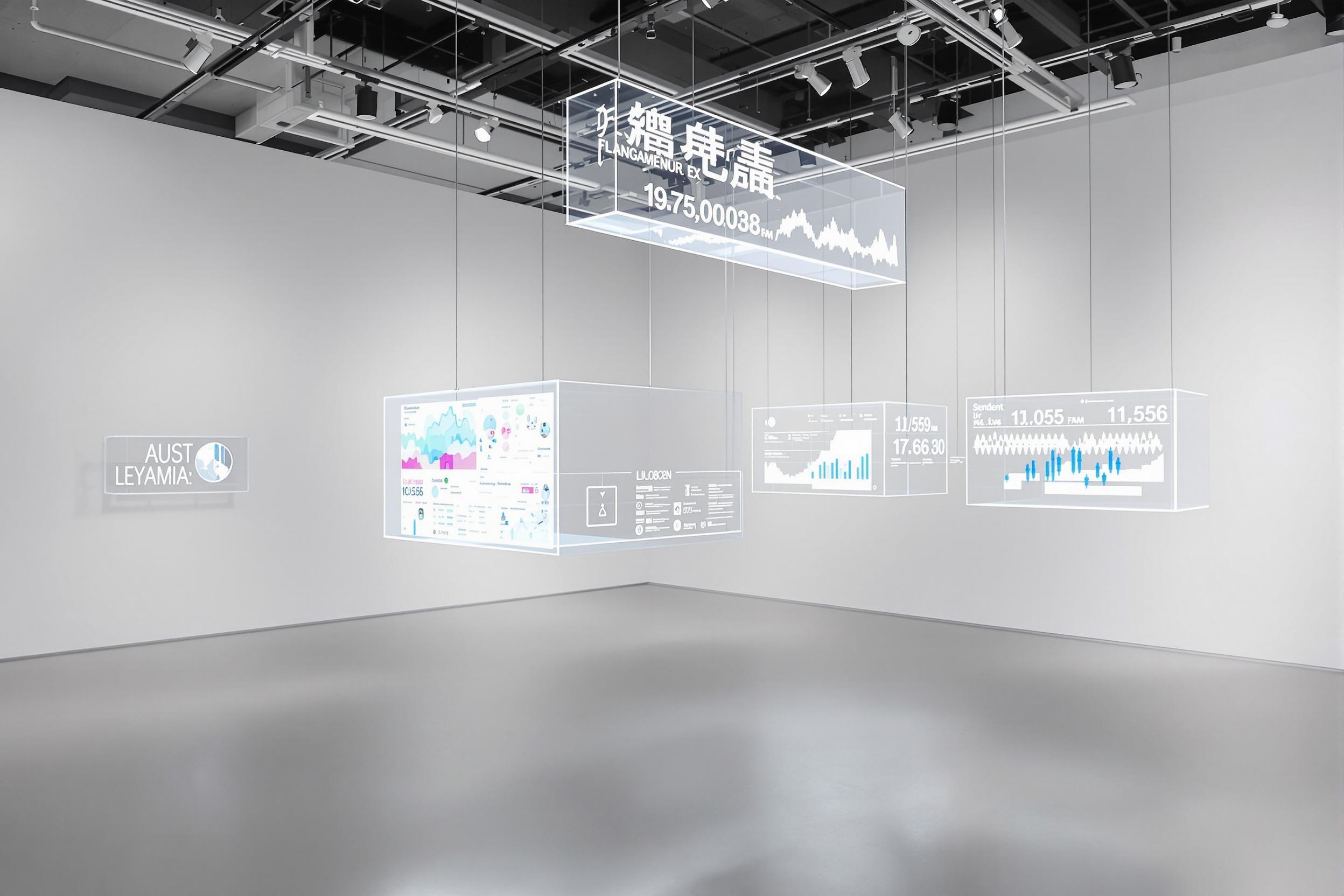In today's AI-driven world, brands with identical 4.5-star ratings can have dramatically different market performances. Why? Traditional sentiment analysis captures only surface reactions, while consumers form complex perceptions through context, framing, and positioning. At Sentaiment, we've found that measuring these deeper dimensions provides the comprehensive insights professionals need to truly understand their brand's digital presence.
"Perception analysis goes beyond mere polarity—it integrates context, narrative framing, and competitive positioning to map how audiences truly interpret your brand." Source
By 2025, over 50% of online queries will involve LLMs, making AI-driven brand perception critical for PR success Source.
Perception Analysis vs Sentiment Analysis: The Paradigm Shift in PR Measurement
Sentiment analysis categorizes content as positive, negative, or neutral based on tone and language. It answers a simple question: "How do people feel about our brand?"
Perception analysis digs deeper. It examines how audiences understand your brand through context, narrative framing, and competitive positioning. Rather than just measuring feelings, it reveals how people think about your brand.
According to Agility PR Solutions, "Sentiment analysis seeks to understand the tone of media coverage... It's not always obvious if the sentiment is positive, neutral or negative - context matters. If you can determine the context, you can determine what public perception is."
Sentiment is just one dimension of perception. Your audience's understanding of your brand includes associations, comparisons, value alignment, and narrative context that sentiment metrics alone can't capture.
The Limitations of Sentiment Analysis in Brand Perception Measurement
Traditional sentiment analysis tools face several key challenges:
- Missing context: Automated tools struggle with sarcasm, cultural references, and double meanings.
- Overlooking narrative framing: How stories about your brand are framed significantly impacts audience interpretation.
- Ignoring competitive context: Sentiment metrics fail to position your brand relative to competitors.
"When performing sentiment analysis, automated tools struggle with nuances like sarcasm, cultural context, and double meanings." Source
Repustate's analysis found that "even though the restaurant had 4.5 stars on Google My Business, there was a lot that customers were unhappy with." This demonstrates how surface-level positive sentiment can mask deeper perception issues.
Consider two headlines with identical "positive" sentiment scores:
"Company X launches innovative product, joining industry leaders"
"Company X finally catches up to competitors with new product"
Both register as positive in sentiment analysis, but they create vastly different perceptions of the company's market position.
The Evolution of PR Measurement: From Sentiment to Perception
PR measurement has evolved significantly over time. The Barcelona Principles 4.0 emphasize outcome-based metrics over AVEs, focusing on revenue, reputation, and relationships. Source
According to Fullintel, "Modern measurement frameworks are incorporating media analysis, social listening, customer feedback, employee sentiment."
This evolution reflects the growing need for multi-dimensional brand monitoring. As consumers engage with brands across more channels and contexts, PR professionals need more sophisticated tools to track and influence these interactions.
AI language models have accelerated this shift by enabling more comprehensive perception analysis. These models can process vast amounts of content to identify patterns in how brands are represented and understood.
How AI Language Models Enable Contextual Brand Analysis
AI and LLMs now power deep perception analysis, surfacing narrative patterns, framing shifts and competitive context at scale:
Agility PR notes that AI models provide "Contextual understanding: AI models can distinguish between sarcasm and genuine praise" and can analyze "emotions such as joy, anger, surprise, and sadness within text."
These capabilities allow PR professionals to extract insights that go far beyond sentiment:
- Associations: What concepts, values, and attributes are linked to your brand?
- Comparisons: How does your brand stack up against competitors in media coverage?
- Narrative framing: What storylines shape how audiences understand your brand?
- Emotional triggers: NLP can identify triggers like joy, anger, surprise, and sadness to inform messaging. Source
AI can identify these patterns at scale, analyzing thousands of mentions to reveal how your brand is perceived in the market. This matters because perception drives consumer behavior – people act based on how they understand your brand, not just how they feel about it.
Our platform monitors AI models leveraging our BEACON Framework to deliver perception insights Learn more.
Case Studies: When Positive Sentiment Masks Divergent Perceptions
Case Study 1: Domino's Pizza Turnaround
Domino's Pizza's turnaround campaign shows how perception analysis can drive success. According to Brand VM, "The transformation stands as one of the most successful PR campaigns, proving that humility and direct consumer dialogue can rehabilitate even a tarnished product."
While sentiment improved, the real win was shifting the perception framework from "fast but low-quality" to "honest and improving." This narrative framing change was more valuable than simple sentiment improvement.
Case Study 2: Saint Peter's University Hospital
3E Public Relations conducted "primary and secondary perception studies to determine an effective media strategy" for Saint Peter's University Hospital during COVID-19. This approach went beyond sentiment to understand how the hospital was positioned relative to competitors and how its expertise was framed in media coverage.
Building a Comprehensive Perception Framework
A complete perception analysis framework includes four key dimensions:
1. Narrative Framing
Framing analysis "explores what elements of reality are strategically or tacitly foregrounded or backgrounded in conversations and text, and how this includes and excludes voices, ideas and interests." This affects how audiences interpret information about your brand.
For example, is your product framed as:
- An innovation story?
- A competitive response?
- A solution to a problem?
Each frame creates different associations and expectations.
2. Attribute Alignment
This dimension measures how well your brand's perceived attributes align with your intended positioning. Are the qualities consumers associate with your brand the ones you want to emphasize?
For example, a luxury brand might track whether it's associated with attributes like "exclusive," "high-quality," and "prestigious" rather than "overpriced" or "flashy."
3. Competitive Positioning
How is your brand positioned relative to competitors? Are you seen as a leader, follower, disruptor, or traditional player in your space?
Britopian notes that "PR is crucial in shaping an organization's reputation, built on perception, narrative, and trust rather than just products or services."
4. Contextual Representation
This dimension examines how your brand is represented in different contexts and cultures. Does your message translate consistently across markets? Do cultural factors affect how your brand is perceived?
Implementing Brand Perception Measurement
To implement perception analysis in your PR measurement, consider these metrics and methods:
Key Metrics
- Narrative share: The percentage of coverage that frames your brand in specific ways
- Attribute alignment score: How closely perceived attributes match intended positioning
- Competitive position index: Your brand's relative position in the competitive landscape
- Context variance: How consistently your brand is perceived across different contexts
Methods and Tools
Several tools enable sophisticated perception analysis:
Cision offers "media monitoring, targeted outreach, and analysis tools to help you track news coverage and measure the success of your campaigns."
According to The CMO, "Brand24 excels as a PR analytics tool by offering comprehensive monitoring of online mentions, including news sites, blogs, social media platforms, and forums."
Sentaiment's platform monitors over 280 AI models, leveraging our BEACON Framework for narrative framing and Echo Score for real-time benchmarking.
Expert Perspectives on PR Measurement Evolution
Johna Burke, AMEC CEO, notes that "In 2025 and beyond, the practice of communication and public relations measurement is a dynamic one, defined by technological progress, changing customer paradigms, and a strong focus on ethical considerations." This aligns with Rue Point's prediction that "PR measurement evolves with AI, ethics, and audience relevance, redefining metrics to prioritize outcomes, authenticity, and legal compliance."
This evolution reflects growing recognition that traditional metrics fail to capture the full impact of PR efforts on brand perception.
Actionable Steps for PR Professionals to Embrace Perception Analysis
Ready to move beyond sentiment analysis? Here's how to get started:
- Audit your current measurement: Identify gaps between sentiment metrics and perception insights.
- Define perception dimensions: Determine which aspects of perception matter most for your brand.
- Select appropriate tools: Choose platforms that can analyze narrative framing and contextual representation.
- Build comprehensive dashboards: Create reports that show perception across multiple dimensions.
- Train your team: Help PR professionals understand and apply perception insights.
The shift from sentiment to perception analysis represents a significant advancement in PR measurement. By capturing how audiences truly understand your brand – not just how they feel about it – you gain deeper insights that drive more effective strategies.
Perception analysis is the new PR standard. Ready to see how your brand looks through the eyes of AI? Request a demo of Sentaiment today.
To learn more about how AI is reshaping brand monitoring, check out BEACON Methodology: How to Benchmark Brand Perception Across AI Models, which explains how to audit and benchmark your visibility across 280+ AI models.
